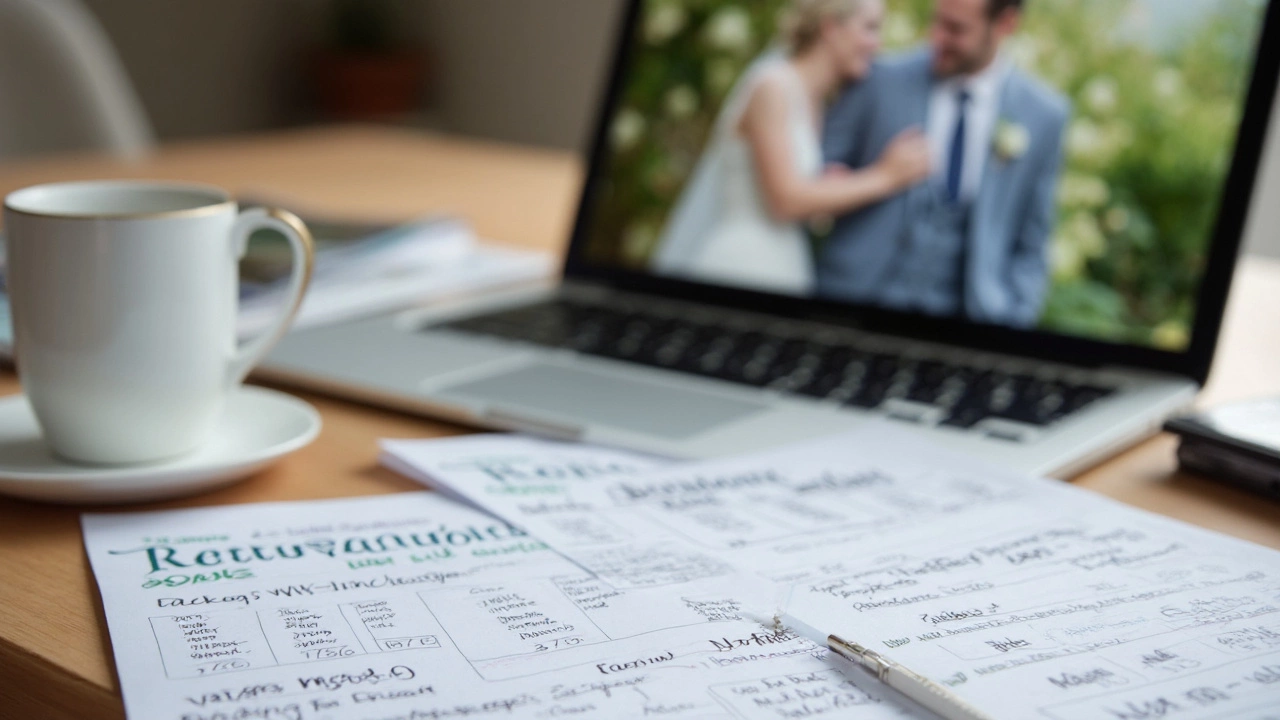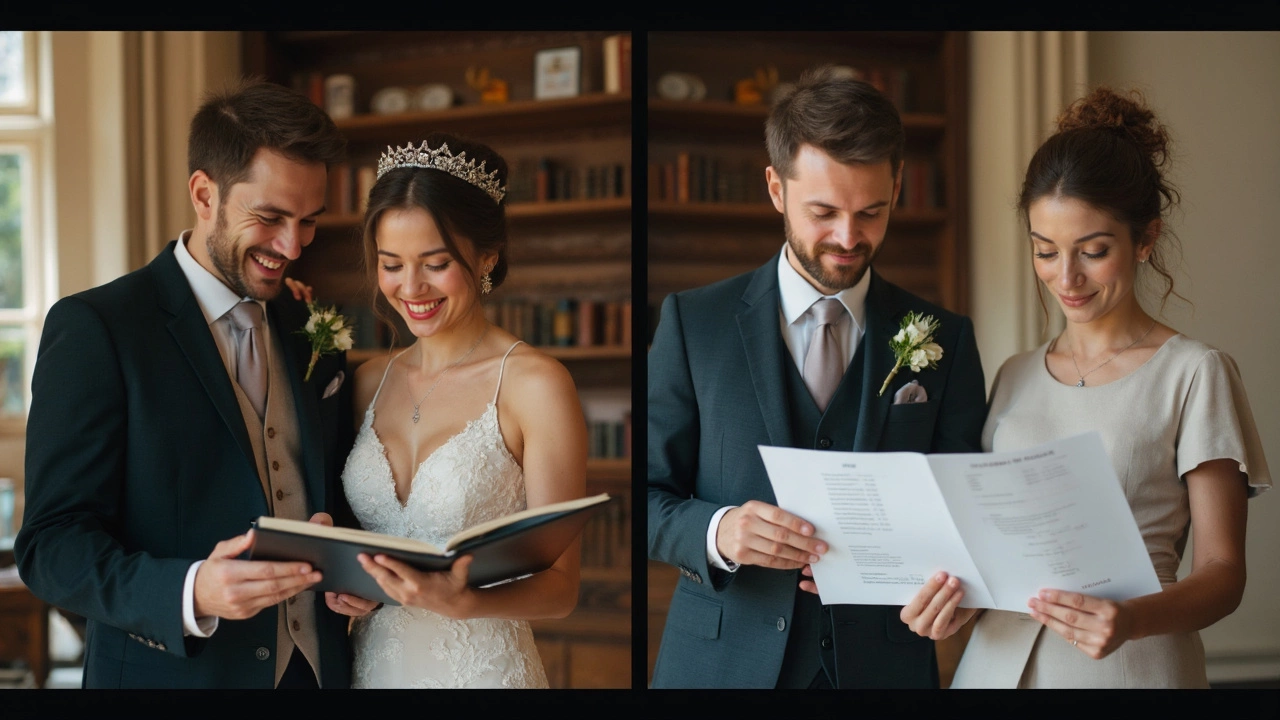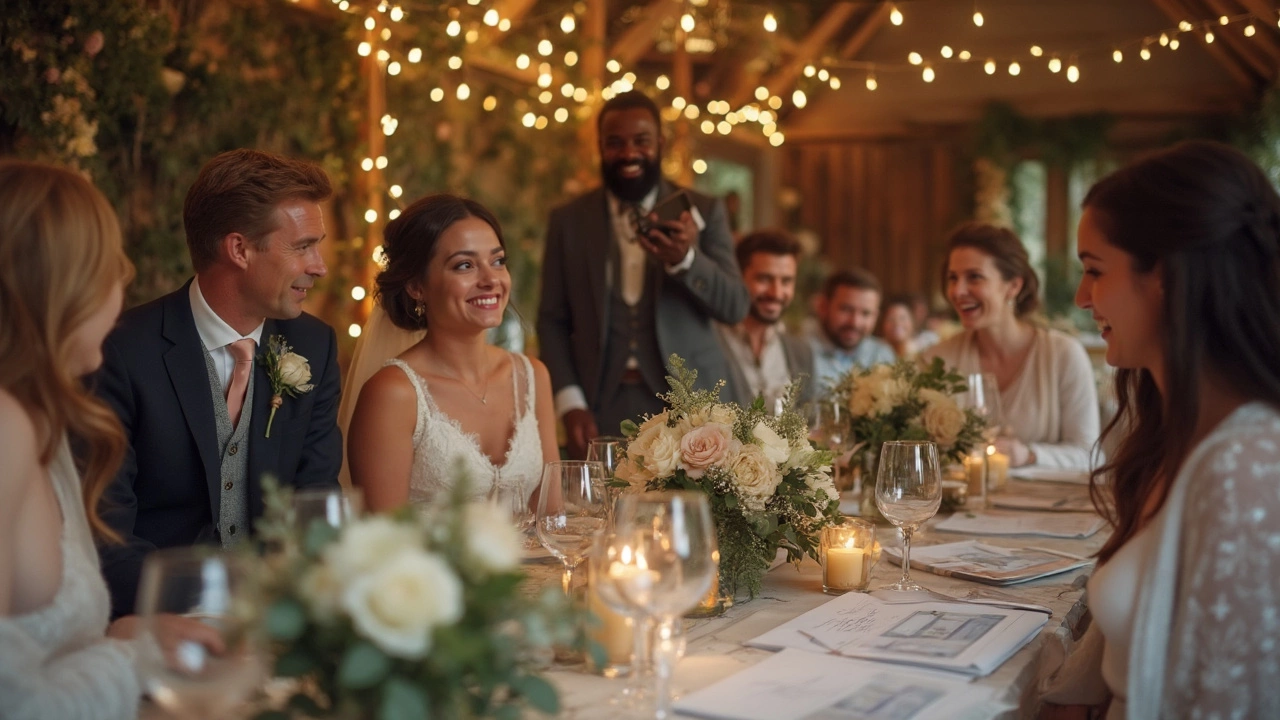You’ve probably already noticed: wedding photography isn’t cheap. It’s one of those expenses that sneaks up and suddenly feels just as important as the venue or the dress. But what’s a fair price? No one wants to spend a fortune, but you definitely don’t want regrets when you look at your photos later.
Real talk—wedding photographers usually charge anywhere from $1,500 to $6,000. The national average in the U.S. swings around $2,800, but you’ll see prices on both sides of that. Location, the photographer’s experience, hours of coverage, add-ons like albums or engagement shoots—all those play into what you’ll end up paying.
The hard truth: you usually get what you pay for. But that doesn’t mean throwing money out the window. Some photographers charge more for their editing style or social media clout, not their skill with a camera. So, the trick is figuring out what matters most to you, and making sure you’re not paying extra for stuff you don’t care about.
- Real Wedding Photographer Prices: By the Numbers
- What Drives the Cost Up (or Down)?
- What to Expect in a Photography Package
- How to Save Without Getting Burned
- Red Flags and Smart Questions to Ask
Real Wedding Photographer Prices: By the Numbers
The first thing people want to know when they start wedding planning: what does a wedding photographer actually cost? Here’s the straight answer. Most couples in the U.S. will pay between $1,500 and $6,000 for a wedding photographer, with the average cost hovering right around $2,800 in 2025. These numbers aren’t just guesses. They come from real surveys by wedding sites and what photographers themselves post online.
If you’re in a major metro area like New York or San Francisco, that number jumps. High-demand areas can start you closer to $3,500 or even $5,000 for someone with a solid reputation. In smaller towns or rural spots, couples can still find skilled pros for closer to $1,500 to $2,000, especially on weekdays or off-season dates.
| Location | Average Price (2025) | Low-End | High-End |
|---|---|---|---|
| Big City (NYC, LA) | $4,000 | $2,800 | $10,000+ |
| Suburban Area | $2,800 | $1,800 | $6,000 |
| Small Town/Rural | $2,000 | $995 | $3,500 |
The gap may seem huge, but here’s why: premium photographers might book only a certain number of weddings each year, focus on fancier editing, or include second shooters and custom albums. On the flip side, new photographers or folks who do weddings on the side tend to charge less—sometimes under $1,000, but expect fewer extras and basic editing.
And don’t forget timing. Saturday in June? Prices go up fast. Choose a weekday or November? You can sometimes negotiate for a much better rate—same talent, smaller price tag. This isn’t a hard rule, but plenty of couples have saved this way.
So before you run for the cheapest or most popular photographer you find, make sure the price includes what actually matters to you (like the number of hours, high-res images, or specific styles). Everyone’s needs are different, but understanding these price ranges keeps you from going in blind—or blowing your entire budget.
What Drives the Cost Up (or Down)?
Photographer prices swing a lot, and honestly, it’s not just some random number. There are real reasons why one person charges $1,500 and another is asking for $5,000. Here’s what actually changes the price:
- Experience: A seasoned pro who’s shot 200 weddings won’t charge the same as someone just building their portfolio. You’re partly paying for peace of mind, knowing they can handle weird lighting, tight timelines, and even drunk uncles.
- Location: Urban areas or popular wedding spots see higher prices. For example, hiring a wedding photographer in New York or San Francisco can easily cost double what you’d pay in a smaller town.
- Hours of Coverage: Basic packages usually start at 6 hours. The more time a photographer is on site, the higher the price. Full day, getting ready to the end of the party, definitely raises the number.
- Number of Photographers: Some packages come with a second shooter. That’s awesome for extra angles, but it means the lead photographer has to pay them, which bumps up your bill.
- Editing and Turnaround: Faster delivery and more advanced editing (think retouching, special effects, custom albums) cost more. Some folks are happy to wait eight weeks for photos, but if you’re not, expect a rush fee.
- Gear and Insurance: Those big cameras and real deal lenses? Not cheap. Plus, any pro should have liability insurance—if they don’t, run away. Better gear and proper coverage mean higher rates.
- Season and Date: Peak wedding season (late spring through early fall) books up first, so prices are higher. Same with Saturdays—if you’re getting married on a Thursday in January, some photographers will knock off quite a bit.
Don’t forget travel costs. If you fall in love with someone from outside your area, budget for hotel, flights, or a mileage fee. And here’s a tiny secret: Some photographers offer smaller packages for elopements or courthouse ceremonies, so don’t be afraid to ask if you’re keeping it simple.
Choosing a photographer is about more than just numbers, but knowing why they charge what they do gives you the info to negotiate and budget smarter. When you see a price, think through what’s adding up behind the scenes.

What to Expect in a Photography Package
When you’re hunting for a wedding photographer, you’ll quickly notice that packages come in all shapes and sizes. There’s no universal set of inclusions, but most pros stick with a few basics. Here’s what you’ll usually find:
- wedding photography coverage: This covers a set number of hours (anywhere from four to twelve). Longer coverage means more moments captured—from the early prep to the late-night dance moves.
- Number of photographers: Some packages include just one shooter, but splurging for a second shooter is popular. Two photographers means you won’t miss moments happening at the same time, like one partner’s teary-eyed vows while the other’s grandma busts a move.
- Digital images: Almost all photographers deliver edited digital files now, either through an online gallery or on a USB stick. High-res, watermark-free images are usually included, but double-check—some charge extra for full-resolution files.
- Albums and prints: Albums are usually add-ons, not guaranteed. The price can bump up a lot for a professionally designed photo book. Prints and wall art are typically separate too.
- Engagement session: This is often bundled in mid-to-high-end packages. It’s a good way to get comfortable in front of the camera and score some extra pics before the big day.
- Editing and retouching: Every package includes some level of editing, but there’s a big difference between light color tuning and heavy retouching or special effects. Ask what’s included—extra retouching may cost more.
- Online gallery: You’ll get a private online gallery to view, download, or share images with family and friends. Many photographers now include this as standard, sometimes for a limited time.
Here’s how different packages tend to stack up:
| Feature | Basic ($1,500-$2,000) | Standard ($2,500-$3,500) | Premium ($4,000+) |
|---|---|---|---|
| Hours of Coverage | 4-6 | 6-8 | 8-12 |
| Photographers | 1 | 1-2 | 2 |
| Digital Files | Yes, sometimes with extra charge for high-res | Yes, usually high-res | Yes, always high-res |
| Engagement Shoot | No | Optional or included | Usually included |
| Album | No | Sometimes included | Usually included |
| Online Gallery | Often, for a limited time | Yes | Yes, often with extended access |
If you see words like “à la carte,” that means you can mix-and-match what you want. The bottom line: read every detail, confirm the number of edited photos you’ll get, and find out what costs extra. Always ask for package details in writing—surprises aren’t fun when they show up on your bill.
How to Save Without Getting Burned
Paying less for wedding photography doesn’t mean you’re doomed to lousy photos. But here’s the deal: wedding photography is one place where going too cheap can actually backfire. Think blurry pics, lost files, or that cousin who thought a fancy phone was all you needed. So, it’s about being smart, not just stingy.
First up, always compare actual packages, not just headline prices. Photographers put different things into their packages — some include engagement shoots, others throw in fancy albums, and a few even deliver every single shot. Ask for a sample contract and a full wedding gallery, not just a highlight reel from Instagram. As wedding expert Carol Lynn of A Practical Wedding puts it:
“Cheap wedding photography can end up being the most expensive mistake you’ll make if you have to redo photos or, worse, have nothing to show for it.”
If you’re trying to stay within a tight budget, try these practical ways to save money while still getting solid results:
- Book in the off-season or on a weekday—photographer rates often drop by 15-25%.
- Limit the hours you need coverage. Choose just the core ceremony and reception moments instead of every single getting-ready shot.
- Skip the extras, like printed albums or second shooters, for now. You can always add on prints later.
- Look for rising talent. Someone who’s newer but building a reputation may charge 30-40% less than established pros, but still deliver impressive quality.
- Ask about digital-only packages, which cut out printing costs and let you make your own albums later.
Some numbers help put things in perspective:
| Photography Option | Average U.S. Price (2024) | Potential Savings |
|---|---|---|
| Full-day coverage (Sat) w/album | $3,500 | – |
| 4-hour coverage (Weekday) | $1,800 | Up to $1,700 |
| Digital-only package | $2,000 | Up to $1,500 |
| Rising/pro photographer | $1,200–$2,500 | 20-45% less |
The big takeaway? Stay focused on the wedding photography experience — check reviews, sample galleries, and contracts — and don’t feel pressured by upsells. A little prep can help you hold onto your cash and your peace of mind.

Red Flags and Smart Questions to Ask
Picking the right photographer is more about trust than just price. Spotting warning signs early can save you a headache on your wedding day. Here’s what to watch for—and what to ask before you sign a contract.
- Wedding photography contracts that are vague or missing details. If the contract doesn’t spell out hours, deliverables, or payment schedule, ask for clarity. No contract? Walk away.
- Promises that sound too good to be true—like hundreds of “fully edited” images in 24 hours. Real editing takes time. If they rush delivery, quality usually drops.
- Lack of a clear backup plan. Do they have a second shooter? What happens if their camera fails? You want backups for everything, including file storage after your day.
- Portfolio feels inconsistent. A handful of nice shots is not enough. Ask to see full wedding galleries—not just highlights.
- Unwilling to provide references or reviews. Professional photographers expect you to do your research. Awkwardness here is a huge red flag.
When you’re interviewing photographers, don’t just chit-chat. Take a notepad and get real answers to these:
- How many weddings have you shot, and are you insured?
- What’s your approach to handling tough lighting or bad weather?
- Can I see a recent, full wedding album?
- How do you handle emergencies (sickness, gear failure, etc.)?
- What’s your retouching and editing process—how many images do we get, and what’s the turnaround?
- Are travel fees or overtime charges clearly laid out?
Let’s talk stats for a second. According to a 2023 survey by WeddingWire:
| Common Red Flag | % of Newlyweds Reporting Issues |
|---|---|
| Hidden Fees or Charges | 27% |
| Poor Communication | 18% |
| No Backup Plan | 13% |
| Late Photo Delivery | 22% |
Bottom line? The best photographers want you to ask these questions. If they’re open and transparent, you’re on the right track. If they dodge, hedge, or seem annoyed, trust your gut and keep looking.
